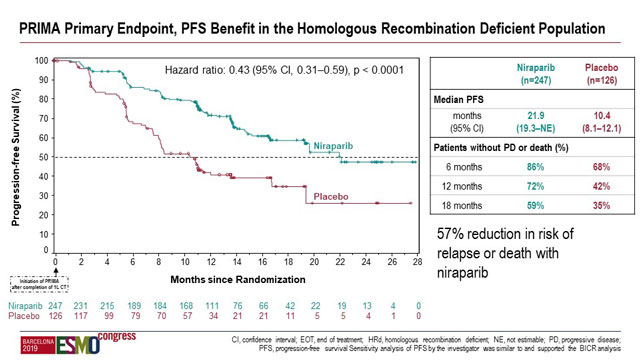
The indication of niraparib in this new scenario represents a breakthrough in the treatment of ovarian cancer and may benefit several patients with refractory disease, including those without BRCA mutation. The median response duration was 8.3 months (95% CI 6.5 – non-estimable). In the HDR+ group, 24% met RECIST response criteria (95% CI 16 – 34).

The primary endpoint corresponded to the overall response rate (ORR). This multicenter, single-arm trial included 463 polytreated patients (median of 4 anterior rows). In order to expand the available therapeutic arsenal, the Food and Drug Administration (FDA) recently approved the use of niraparib PARP inhibitor (Zejula®) as monotherapy for women with advanced high grade serous ovarian carcinoma, primary ovarian, tube uterine or peritoneum, previously treated with at least three chemotherapy regimens and whose tumors have Homologous Recombination Deficiency (HDR), characterized by deleterious BRCA gene mutation or genomic instability.Īpproval was based on the results of the QUADRA phase 2 study, published in The Lancet Oncology. FDA approves niraparib for HRD-positive advanced ovarian cancer On October 23, 2019,the Food and Drug Administration approved niraparib (ZEJULA, Tesaro, Inc.) for patients with advanced ovarian.

Treatment options for late-line ovarian cancer are scarce, with response rates usually below 10% and median overall survival in this population not exceeding 5-9 months.


 0 kommentar(er)
0 kommentar(er)
